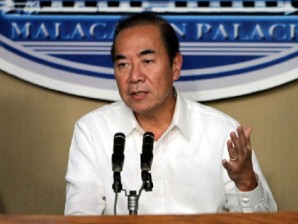Public Works chief bares plan to combat floods

DPWH Secretary Rogelio L. Singson. INQUIRER FILE PHOTO
MANILA, Philippines — What techniques is the Philippines thinking of employing to solve flooding, considering the devastation left in the wake of intense rain caused by the southwest monsoon?
Experts have cited options of decentralizing developments in the country away from the densely populated Metro Manila. Others spoke highly of Malaysia’s Stormwater Management and Road Tunnel (Smart) which rid Kuala Lumpur of floods.
Public Works Secretary Rogelio Singson said that they were looking into several options, one of which is water impounding. He cited as example the Araneta Underpass for which the DPWH has “made provisions for sufficient pumping capacity.”
In the event of intense rain which could cause flooding, he said that they would have the capability to pump out the floodwater to the nearest body of water. Transferring floodwater to another body of water will be possible given that the level of water in the receiving area is low.
He said that the flooding in Lagusnilad (underpass) in Manila can be prevented by installing a pumping system. Another water tunnel project is in the pipeline for the University of Sto. Tomas area (Espana-Blumenttrit).
Article continues after this advertisementAsked to comment about Marikina Representative Miro Quimbo’s suggestion for a “flood czar,” Singson said that he did not think there was enough expertise for such a post. “I’ve explained how it works; don’t let excess water run down from upstream. Restrain it from coming down, use natural flood planes,” he said.
Article continues after this advertisementAnother plan that the DPWH entertained was building a low dam specifically constructed to contain floodwater during the rainy season. The dam, as opposed to a high dam’s 100 meters, would only be 10 to 25 meters and would store water not for domestic use.
Singson said the dam should not be used as a multi-purpose structure to ensure that it will be empty when (floodwater) comes in,” he said.
He said he also favors an aqueduct to be built for transferring water from the dam into a catchment area instead of allowing it to drain to the Pasig and Marikina rivers.
For flood-prone areas, the DPWH chief also suggested that the creation of water impounding facilities be required of developers, telling Cavite Representative Lani Mercado-Revilla that water should not all go into the city drainage. “It is the responsibility of a good developer.”